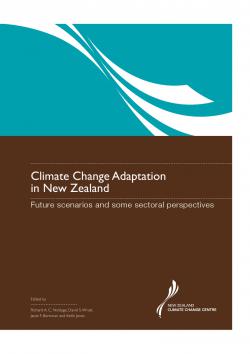 I well remember a meeting of the Hamilton group of Amnesty International back in the 1990s, when a visitor who lived in the Maldives turned up, wanting to find out more about how AI worked. It wasn’t long before we found out why he was interested, as he told us the story of repression and out-of-sight political prisoners in his country.
I well remember a meeting of the Hamilton group of Amnesty International back in the 1990s, when a visitor who lived in the Maldives turned up, wanting to find out more about how AI worked. It wasn’t long before we found out why he was interested, as he told us the story of repression and out-of-sight political prisoners in his country.
One of those prisoners was Mohamed Nasheed, whose party won an election in 2008, ending the 30 years dictatorship which preceded it. He is now President of the Republic of Maldives. It was no easy path to the presidency. His several imprisonments added up to a total of six years, 18 months of which were spent in solitary confinement. And it’s no easier now that he is there. The Maldives, comprising numerous coral islands, is the lowest country in the world, with a maximum natural ground level of only 2.3 metres, with the average being only 1.5 metres above sea level. Its vulnerability to climate change is obvious. It’s certainly obvious to Nasheed, and he’s not taking it lying down, as he made very clear in his blog written last year before the Copenhagen conference:
“No one in the Maldives is applauding the recent pledge of the G8 nations to try and hold temperature increases to 2 degrees and the atmospheric concentration of CO2 to 450 parts per million. A few years ago, those might have been laudable goals, but new science makes clear they’re out of date…
“In January 2008, James Hansen, one of the world’s leading climatologists, published a series of papers showing that the actual safe limit for carbon in the atmosphere was at most 350 parts per million. Anything higher than that limit, warns Hansen, could seed ‘irreversible, catastrophic effects’ on a global scale…
“For the Maldives, climate change is no vague or distant irritation but a clear and present danger to our survival. But the Maldives is no special case; simply the canary in the world’s coal mine. Neighboring Asian countries like Bangladesh are already suffering from saltwater intrusion as seas rise; Australia and the American southwest are enduring epic drought; forests across western North America are succumbing to pests multiplying in the growing heat. And all of this is with temperature increases of nearly 1 degree — why on earth would we be aiming for 2 degrees?”
He has recently appeared — via video link — at the Hay Festival in the UK. The Guardian’s accounts here and here were enthusiastic.
Appearing by live video link, Nasheed showed more life and animation in 2D than any of the politicians currently wandering around the site (there’s a lot of former Labour ministers with time on their hands these days) usually manage in the flesh. Where our MPs duck and dive and try to say as little as possible that might upset anyone, Nasheed went in with all guns blazing.
Ed Miliband interviewed Nasheed. There were several points where his sense of the urgency of the issue was very apparent. When asked about educating people about climate change he declared it is too late for that.
“What we really need is a huge social 60s-style catalystic, dynamic street action. If the people in the US wish to change, it can happen. In the 60s and 70s, they’ve done that.”
But he also expressed uncertainty about the US, considering China and India actually far more receptive to the concept of climate change.
“My sense of China is that they tend to believe in climate change. My sense of the US is that a fair amount of them simply don’t believe in it.”
He noted how, unlike the developed world, India listened to small countries’ fears over the issue. “The refreshing thing about India is they listen to people, certainly they listen to the Maldives.”
Nasheed said countries committed to tackling climate change should press ahead with agreements and emissions reductions regardless of whether they took more recalcitrant nations with them.
“We cannot wait for the lowest common denominator where everyone agrees to doing almost nothing.”
He’s not waiting, like New Zealand, for others to take the lead. The Maldives is embarking on a programme to become the first carbon-neutral country within 10 years. It has three large wind farms under construction and photovoltaic technologies are being developed, although the country is also having to build sea walls to repel the ocean and energy-hungry desalination plants to replace fresh water supplies lost to the sea.
It might look like hoping against hope, but this was his conclusion:
“I believe in human ingenuity. We are not doomed. We can succeed and we must work along those lines.”
Brave words, though there must be times when they become difficult to say. The Maldives lives on the edge of a slow disaster. We can be grateful for the clarity and persistence with which Nasheed and others like him keep drawing attention to what is happening. But the forces of denial in rich countries are not yet exhausted. Few politicians in power in those countries are willing to speak with like clarity to their populations, and denialist bluster still holds considerable sway among legislators. Nasheed’s concern that the US is not yet ready to face reality is well founded. It is by no means clear that we will act in time to save the Maldives from the ravages of a rising sea.
Note: There’s a short video clip here from the UN Environment Programme in which Nasheed sets out his concerns in very reasonable terms which are his trademark. This Al Jazeera interview covers more specific ground. I liked his statement in the course of it: “Leaders cannot afford the luxury of ignorance.“
Like this:
Like Loading...


 The
The  Towards the end of a recent Yale Environment 360
Towards the end of a recent Yale Environment 360  When I first began to realise what a serious matter climate change was I found it difficult to get interested in adaptation. It sounded to me like acceptance of something that should be resisted. And I disliked the bland voices claiming that the effects of global warming would be easily adapted to if not positively beneficial. However with time I’ve recognised that there is no escaping adaptation. It is as much a part of coping with the threat of climate change as mitigation, and the one doesn’t displace the other. Indeed the need for adaptation may sharpen awareness and spur determination to turn away from fossil fuel energy.
When I first began to realise what a serious matter climate change was I found it difficult to get interested in adaptation. It sounded to me like acceptance of something that should be resisted. And I disliked the bland voices claiming that the effects of global warming would be easily adapted to if not positively beneficial. However with time I’ve recognised that there is no escaping adaptation. It is as much a part of coping with the threat of climate change as mitigation, and the one doesn’t displace the other. Indeed the need for adaptation may sharpen awareness and spur determination to turn away from fossil fuel energy. I well remember a meeting of the Hamilton group of Amnesty International back in the 1990s, when a visitor who lived in the Maldives turned up, wanting to find out more about how AI worked. It wasn’t long before we found out why he was interested, as he told us the story of repression and out-of-sight political prisoners in his country.
I well remember a meeting of the Hamilton group of Amnesty International back in the 1990s, when a visitor who lived in the Maldives turned up, wanting to find out more about how AI worked. It wasn’t long before we found out why he was interested, as he told us the story of repression and out-of-sight political prisoners in his country.